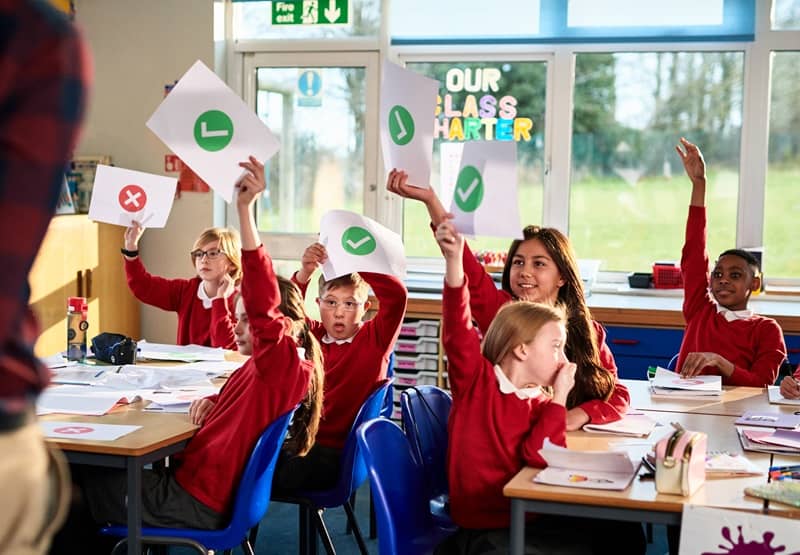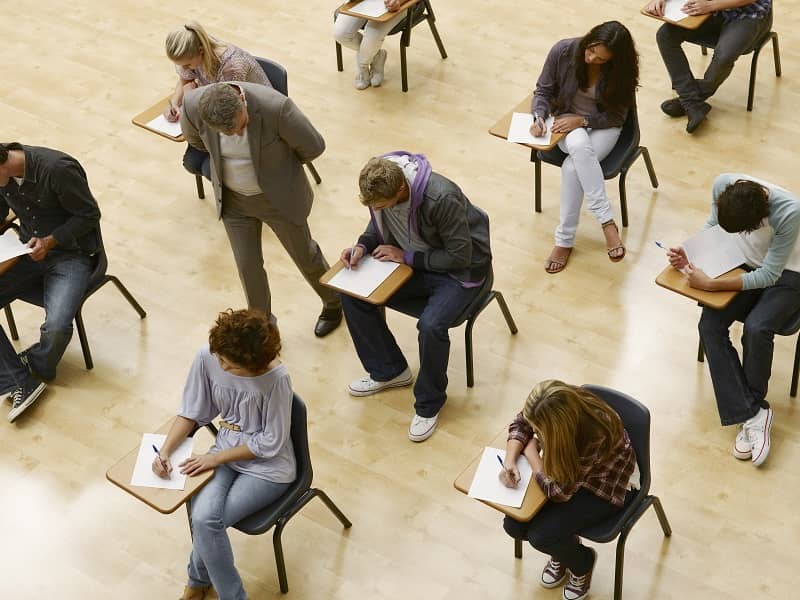By Eric Fruits, Ph.D.
The COVID-19 pandemic has wrecked state and local budgets. Moreover, it’s looking more likely that school operations will not return to normal this fall. Social distancing guidelines will demand smaller class sizes. The days of 25-30 students per classroom are over for the foreseeable future. There is simply not enough space in our brick-and-mortar schools.
Some distancing can be achieved by staggering instruction across days or weeks. However, these arrangements will create scheduling havoc for families trying to return to work, especially for families with multiple children spanning several grades or schools.
We can also achieve the required social distancing by encouraging alternatives to existing brick-and-mortar schools. For example, online public charter schools have a long history of successful education outcomes while achieving social distancing. Many private schools had digital learning plans in place prior to the pandemic and were able to quickly adjust to Governor Kate Brown’s March 23 “stay home, save lives” order. For example, St. Mary’s Academy in Portland switched to digital learning the day after the order was issued. In contrast, Portland Public Schools took nearly a month to get its distance learning plans in place.
Education savings accounts are a readily available option to foster school choice and downsize public school enrollment to achieve class sizes consistent with social distancing guidelines. Moreover, a carefully crafted ESA program would reduce state spending on education while improving options and opportunities for thousands of Oregon students.
Five states currently operate ESA programs, in which the state deposits a percentage of the funds that otherwise would be spent to educate a student in a public school into an account associated with the student’s family. The family may use those funds for private school tuition, home-based learning, or other education expenses. Funds remaining in the account after expenses are paid may be “rolled over” for use in subsequent years.
Typically, the amount deposited in an ESA is less than the amount the state otherwise would pay for a student to attend a public school, with the state recouping the difference. In this way, ESAs can be designed to produce net cost savings to state and local government budgets.
The average General Purpose Grant per ADMw is about $8,600 for the 2020-21 school year. Even a modest ESA of $3,000 for children with a household income less than 185 percent of the federal poverty level and participating children with a disability (as defined in ORS 343.035) and $2,000 for other children would generate substantial savings to the state and local school districts.
- Because the ESA amount is significantly less than the amount the state currently spends per student, the state would be making money from every student who participates in the ESA program.
- Most local sources of funding, especially property taxes, will be mostly unaffected by the pandemic. These sources are not linked to public school enrollment. Thus, students with an ESA who choose to leave the public school system will be freeing up financial resources for those who choose to remain.
In the 2019 legislative session, SB 668 was introduced. The bill would have created an ESA program in Oregon. As introduced, the bill was designed for state and local governments to “break even” fiscally on the ESA program. SB 668 can be used as a template for future legislation, with present-day adjustments to ensure cost savings for the state as well as local school districts.
The COVID-19 crisis is a time to re-evaluate how education is provided and funded throughout the state. We are all learning that “business as usual” will not return anytime soon. Now is the time to develop innovative ways to provide education safely to our children while providing their struggling families with the flexibility to care for their kids while returning to work.
Eric Fruits, Ph.D. is Vice President of Research at Cascade Policy Institute, Oregon’s free market public policy research organization.
Click here for PDF version:
20-18-Education_Savings_Accounts_Are_an_Innovative_Way_to_Provide_Flexible_Safe_K-12_OptionsPDF













Sandra Nelson
Thank you for introducing us to the ESA model. It seems like a winning solution for children, parents, taxpayers, public schools, and new budget and health constraints. What can people do to make this more than just a great idea?